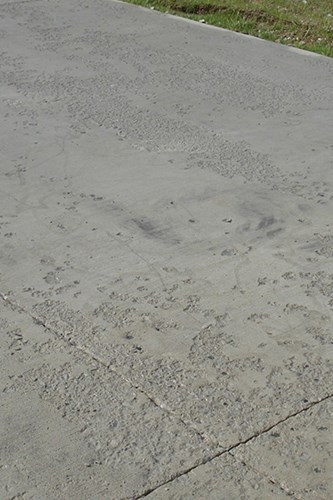 Concrete is a low maintenance building material prized for its strength and longevity. Nevertheless, winter weather and all that comes with it – finishing shortcuts, exposure to freezing and thawing, and the use of de-icing chemicals, to name just a few, can expose weaknesses within the concrete and cause defects to its surface. One of the most common defects observed after a long winter is scaling, which occurs when the top layer of concrete begins to chip, flake or peels away. Below is a list of the most common causes of scaling during the winter months and some prevention methods:
Concrete is a low maintenance building material prized for its strength and longevity. Nevertheless, winter weather and all that comes with it – finishing shortcuts, exposure to freezing and thawing, and the use of de-icing chemicals, to name just a few, can expose weaknesses within the concrete and cause defects to its surface. One of the most common defects observed after a long winter is scaling, which occurs when the top layer of concrete begins to chip, flake or peels away. Below is a list of the most common causes of scaling during the winter months and some prevention methods:
No (or Low) Air Entrainment
- Entrained air in hardened concrete is an important factor in concrete’s strength and workability. Air-entraining admixtures produce billions of microscopic air pockets within concrete, which relieves internal pressure by providing tiny spaces for water to expand when it freezes. No or low air entrainment in exterior concrete exposed to freeze-thaw conditions will result in poor durability. So, the use of air-entrained concrete is a must in order to prevent scaling and freeze-thaw damage.
Air-entrained concrete contains a lower water-to-cement ratio, which helps to produce a stronger wear-resistant surface. However, it can still scale if exposed to conditions such as exposure to deicing salts, poor finishing practices and insufficient curing. Look to Euclid Chemical’s Eucon® air entraining admixtures to produce a consistent and stable air void system.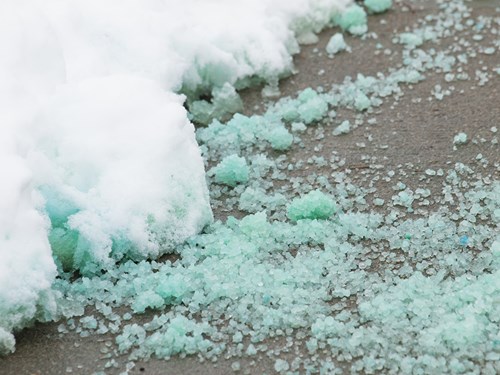
Exposure to Deicing Salts
- Deicing chemicals are commonly sprayed on roads and sidewalks during cold climate winter months to lower the freeze point of water, reducing the potential danger of ice and snow buildup on surfaces. Although this is an effective method for keeping traffic moving safely, deicing chemicals are known to amplify freeze-thaw deterioration and chloride salt de-icers can cause corrosion of reinforcing steel.
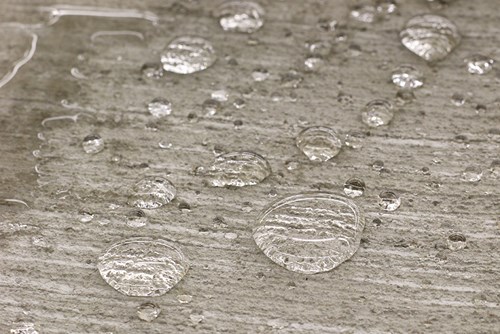 Euclid Chemicals Baracade® line penetrating sealers are ideal for protecting existing concrete from the damaging effects of winter. These long-lasting products use silane and siloxane product chemistry and are developed to soak into concrete and create a surface that repels both water and salts.
Euclid Chemicals Baracade® line penetrating sealers are ideal for protecting existing concrete from the damaging effects of winter. These long-lasting products use silane and siloxane product chemistry and are developed to soak into concrete and create a surface that repels both water and salts.
Poor Finishing Practices
- Finishing bleed water into the fresh concrete will produce a high water-to-cement ratio at the surface, which will result in the creation of a surface with low strength and poor durability. In addition, overworking the concrete during finishing will reduce the air content in the surface layer, making it susceptible to scaling in freezing and thawing conditions.
Avoid performing any finishing operations with water present on the concrete surface. Instead, wait until the water has evaporated—especially when placing air-entrained concrete in conditions where the surface may appear to be dry. Any finishing operations performed while the concrete is still bleeding will result in future issues, including scaling. Methods such as the use of fog sprays or evaporation retardants are recommended to prevent this issue.
Insufficient Curing
- Proper curing ensures sufficient hydration, which allows the concrete to achieve its highest potential strength. Inadequate curing often results in a weak surface skin, which will scale if exposed to freezing and thawing in the presence of moisture and deicing salts.
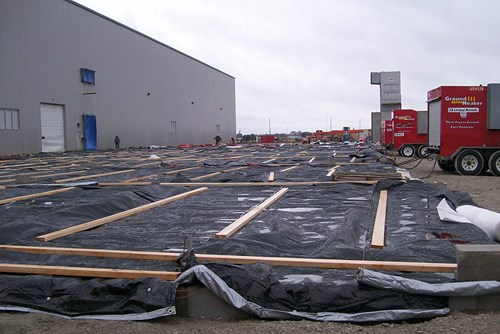 The process of curing concrete becomes more challenging as temperatures decline. Early freezing can reduce the final strength of the concrete by up to 50 percent. Ensure proper curing methods by using curing compounds (if the weather allows) or curing blankets to ensure a good cure.
The process of curing concrete becomes more challenging as temperatures decline. Early freezing can reduce the final strength of the concrete by up to 50 percent. Ensure proper curing methods by using curing compounds (if the weather allows) or curing blankets to ensure a good cure.
When the environment or poor concreting practices result in concrete scaling, the bulk of the concrete typically remains structurally sound, although the visible portion has become aesthetically unpleasing. 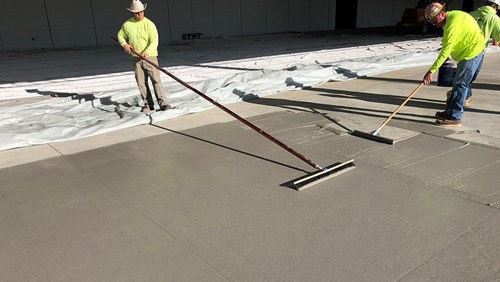 Tear-out and full replacement can be quite expensive, so the installation of a thin, cementitious resurfacer such as Euco Re-Cover is often the best method to restore the surface to an attractive, serviceable condition. Euco Re-Cover is simple to apply, cures quickly, and is formulated with polymers and fiber reinforcement to provide good adhesion to the base concrete and long-term durability.
Tear-out and full replacement can be quite expensive, so the installation of a thin, cementitious resurfacer such as Euco Re-Cover is often the best method to restore the surface to an attractive, serviceable condition. Euco Re-Cover is simple to apply, cures quickly, and is formulated with polymers and fiber reinforcement to provide good adhesion to the base concrete and long-term durability.
Jennifer Crisman is the Director of Marketing Services at Euclid Chemical. She can be reached at jcrisman@euclidchemical.com.